M 7.5 - Hindu Kush region, Afghanistan
- 2015-10-26 09:09:42 (UTC)
- 36.524°N 70.368°E
- 231.0 km depth
Interactive Map Regional Information Felt Report - Tell Us! 000567Responses Contribute to citizen science. Please tell us about your experience.
- Did You Feel It?
VIIImmi 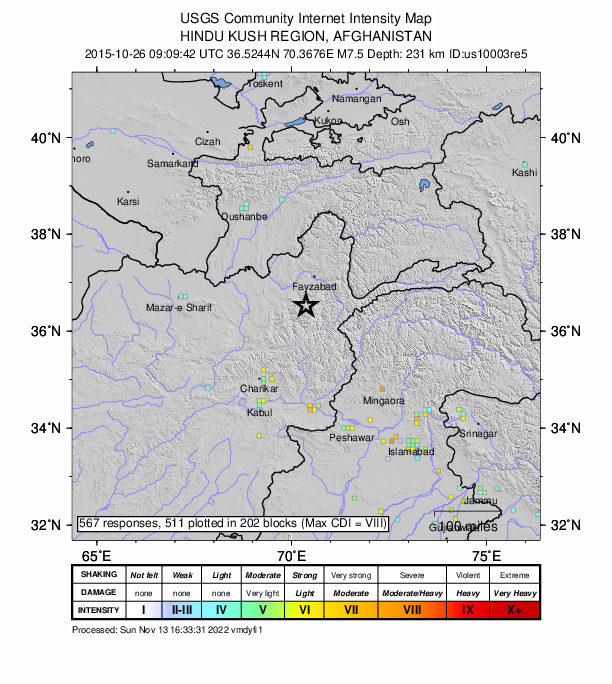
Community Internet Intensity Map - ShakeMap
VIImmi 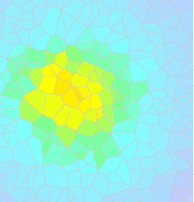
Estimated Intensity Map - PAGER
ORANGE 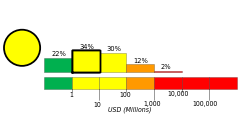
Estimated Economic Losses 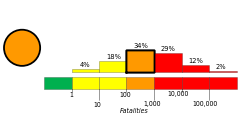
Estimated Fatalities Origin - Review Status
- REVIEWED
- Magnitude
- 7.5 mww
- Depth
- 231.0 km
- Time
- 2015-10-26 09:09:42 UTC
Moment Tensor Fault Plane Solution Finite Fault 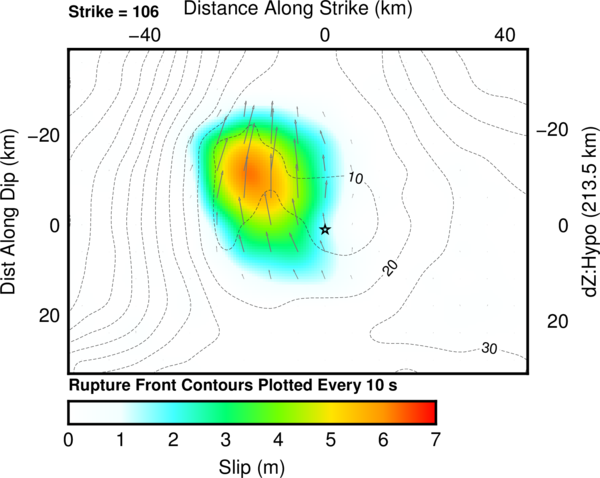
Cross-section of slip distribution. View Nearby Seismicity - Time Range

± Three Weeks - Search Radius

250.0 km - Magnitude Range

≥ 4.0
Contributors US
USGS National Earthquake Information Center, PDE
Tectonic Summary
The October 26, 2015, M 7.5 earthquake near the Hindu Kush region of Afghanistan (southwest of Jarm) occurred as the result of reverse faulting at an intermediate depth, approximately 210 km below the Hindu Kush Range in northeastern Afghanistan. Focal mechanism solutions indicate that rupture occurred on either a steep, south-dipping reverse fault or a shallow, north-dipping thrust fault. Of these two possible fault orientations, finite-fault modeling of globally recorded seismic data is more consistent with slip on the steep south-dipping fault. At the location of the earthquake, the India subcontinent moves northward and collides with Eurasia at a velocity of about 37 mm/yr.
Active faults and their resultant earthquakes in northern Pakistan and adjacent parts of India and Afghanistan are the direct result of the convergence between the India and Eurasia plates. This collision causes uplift that produces the highest mountain peaks in the world, including the Himalayan, the Karakoram, the Pamir, and the Hindu Kush Ranges.
While commonly plotted as points on maps, earthquakes of this size are more appropriately described as slip over a larger fault area. Reverse-faulting events of the size of the October 26, 2015, earthquake are typically about 70x40 km (length x width); modeling of this earthquake implies dimensions of about 30x30 km, predominantly west of the hypocenter.
Earthquakes like this event, with focal depths between 70 and 300 km, are commonly termed “intermediate-depth” earthquakes. Intermediate-depth earthquakes represent deformation within subducted lithosphere rather than at the shallow plate interfaces between subducting and overriding tectonic plates. They typically cause less damage on the ground surface above their foci than is the case with similar-magnitude shallow-focus earthquakes, but large intermediate-depth earthquakes may be felt at great distance from their epicenters. “Deep-focus” earthquakes, those with focal depths greater than 300 km, also occur beneath the northeastern part of Afghanistan. Earthquakes have been reliably located to depths of just over 300 km in this region.
Seven other M 7+ earthquakes have occurred within 250 km of this event over the preceding century, the most recent being a M 7.4 earthquake in March 2002 just 20 km to the west of the October 26, 2015, event, and with a similar depth and thrust fault orientation. The 2002 event caused more than 150 fatalities and the damage or destruction of over 400 houses in relation to an associated landslide. A M 7.4 event in December 1983 at a similar depth just 8 km to the south of the October 26, 2015, earthquake resulted in 26 fatalities, hundreds of injuries and extensive damage in the region. The most deadly recent event in the region occurred 330 km to the southeast of the October 26, 2015, earthquake, in the Kashmir region of Pakistan on October 8, 2005. This 2005 event killed at least 86,000 people and caused extensive damage. The 2005 event was shallow (26 km) and was caused by geologic forces that are distinctly different than those driving deep earthquakes in the Hindu Kush region.
Hayes et al. (2016) Tectonic summaries of magnitude 7 and greater earthquakes from 2000 to 2015, USGS Open-File Report 2016-1192. (5.2 MB PDF)


